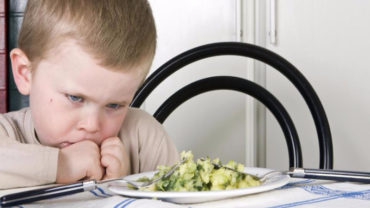MAma speaks: I was literally carrying hand sanitizers in my pocket when I had my first born, suffice to say she gets sick easier compared to my second born when I was more relaxed!
via treehugger: Science is telling parents that keeping kids clean is not the best thing for them.
Kids are fabulous, but they can be pretty gross, too. Not only does having a baby mean you’ll get up to your elbows in poopy diapers on a daily basis, but it also means having to remove countless nasty things from kids’ mouths, such as old dried pieces of chewing gum or the cleaning toothbrush that my one-year-old found under a friend’s kitchen sink.
If Canadian microbiologist B. Brett Finlay had been in the room, he would tell us parents to relax. Finlay is a professor at the University of British Columbia and co-author of Let Them Eat Dirt: Saving Your Child from an Oversanitized World, along with Marie-Claire Arrieta. Finlay was recently interviewed by Anna Maria Tremonti on CBC Radio, and I listened to the segment with great interest, as grubby little kids are a-plenty in my home.
Finlay’s fundamental message is that kids must be allowed to get dirty. Parents and teachers need to stop slathering their kids with hand sanitizer because it actually does more harm than good, killing off the good (of which there are many), along with the relatively few bad ones. The microbes found in dirt and dirty things play a crucial role in training a child’s immune system to respond correctly, and to populate the good microflora in their gut.
“If you look at … Western society diseases — I’m including things like asthma, allergies, obesity, diabetes, inflammatory bowel disease, depression, stress, anxiety, autism — these things actually all have microbial links.”
Finlay says studies have shown that kids who grow up on farms or have dogs at home are 20 percent less likely to develop asthma, the reason being that they’re always in contact with a greater number of microbes, often feces, which Finlay doesn’t see as a bad thing. Fecal transplants are being used successfully to repopulate good microflora in some patients whose intestinal microbes have been wiped out by antibiotic treatments. It’s the same idea behind swabbing C-section babies with their mother’s vaginal microbes, in order to populate their intestinal tract with the right microbes from the beginning.
“The science is now telling us that [keeping kids clean] is actually not the best thing to do. These [germophobe] mothers need to ease off a bit and get over the ‘ew’ factor, and realize that kids are going to be kids, that they are going to put a lot of strange things in their mouth, and this is part of them experiencing the world, tasting the world we live in, as well as replenishing these microbes they need to develop.”
Parents should adjust their perspective on what constitutes good hygiene for kids. If a little one fights bath time, let it go. In fact, aim for a ring of dirt around the tub; that’s when you’ll know it was really time for a bath!
Finlay says that diet is very important, since refined carbs leave little for the lower intestine to digest, which in turn does not feed its microbes sufficiently. Make it work by eating whole grains, fibrous fruits and vegetables, and nuts.






